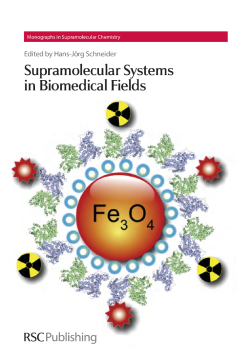
Additional Information
Book Details
Abstract
Non-covalent interactions, which are the heart of supramolecular chemistry are also the basis of most important functions of living systems. The ability to apply supramolecular chemistry principles to the life sciences, such as designing synthetic host compounds to selectively interact within biological targets, has gained wide appeal due the vast number of potential applications.
Supramolecular Systems for Biomedical Fields provides in sixteen chapters a comprehensive overview of these applications. Each chapter covers a specific topic and is written by internationally renowned experts in that area. Sensing of bioactive inorganic ions and organic substrates is the focus of several contributions, as well as interactions with proteins and nucleic acids. Specific chapters are devoted to cyclodextrins, calixarenes and cucurbiturils as most frequently used receptors, including applications such as drug delivery and protection, gene transfer and others. Other chapters address the use of combinatorial libraries, molecular imprinting techniques, enzyme assays, supramolecular gels, bioimaging, drug activation, photodynamic therapy, and antitumour metal complexes.
This timely publication will appeal to graduate students and researchers from chemical, pharmaceutical, biological, and medicinal fields interested in the supramolecular chemistry of biological systems and their practical potentials.
Hans-Jorg Schneider has made many contributions in the field of supramolecular chemistry, in particular on mechanisms of molecular recognition including chemomechanical polymers, on cyclophane and cyclodextrin chemistry, and on synthetic enzyme and receptor analogs. The topics included synthetic allosteric complexes, polyamines, complexes with nucleotides and nucleic acids, with peptides, as well as artificial esterases and nucleases. Hans-Jorg Schneider has published over 260 papers, authored, co-authored or edited several books, including a textbook on supramolecular chemistry.
